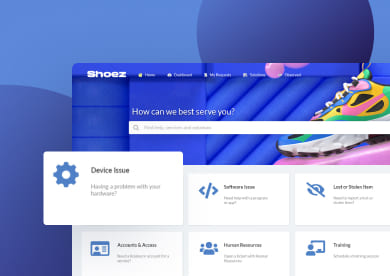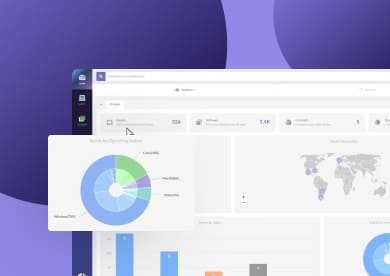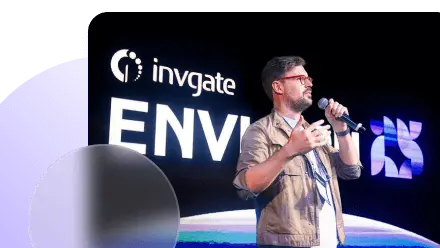Hardware inventory software is essential for keeping IT operations organized, cost-effective, and secure. It allows IT teams to automate Hardware Inventory Management, gain real-time visibility over devices, and ensure every asset is accounted for across its lifecycle.
There are plenty of Hardware Inventory Management software options on the market (from open-source tools to enterprise-grade platforms), each offering different features, pricing models, and levels of complexity.
In this guide, we’ll walk you through what hardware inventory software does, compare the top 10 tools for 2025, and help you find the right fit for your organization’s needs.
What is Hardware Inventory Management?
Hardware Inventory Management (HIM) is the practice of tracking, organizing, and maintaining physical assets within an organization.
This can include a wide range of assets — from office machinery and tools to specialized devices. The goal is to ensure assets are properly recorded, used, and replaced or maintained when necessary.
By implementing hardware inventory processes, organizations can minimize waste, reduce unexpected costs, and improve accountability across departments.
What is IT Hardware Inventory Management?
IT Hardware Inventory Management is a core function of Hardware Asset Management (HAM) — which focuses on tracking, maintaining, and optimizing physical tech assets — and, by extension, of IT Asset Management (ITAM).
It plays a critical role in supporting IT operations by providing accurate, real-time data on the location, status, and usage of these devices.
What is hardware inventory software?
Hardware inventory software is a digital tool that helps organizations keep track of their physical devices in one centralized place.
Instead of relying on spreadsheets or manual updates, the software automates the process, providing real-time visibility into what assets you own, where they are, who uses them, and their current status.
Manual tracking with spreadsheets or isolated systems is slow, error-prone, and hard to scale. Hardware inventory software automates discovery, centralizes data, and gives you real-time visibility into your devices.
This helps IT teams cut costs, strengthen security, simplify audits, and plan hardware lifecycles with confidence.
Key hardware inventory benefits
- Lower costs — Avoid unnecessary purchases and optimize asset usage.
- Improved security — Spot vulnerabilities and unauthorized devices quickly.
- Faster audits — Generate accurate reports on demand.
- Better planning — Track hardware lifecycles to schedule replacements or upgrades.
Top features to look for in a hardware inventory tool
Not all hardware inventory tools are created equal. The right one should go beyond simple tracking and provide the automation, insights, and integrations you need to manage your devices efficiently. Key features include:
- Automated discovery: Detects and records new devices across your network without manual input.
- Centralized database: Keeps all hardware details (location, status, warranty, and ownership) in one place.
- Barcode and QR code tagging: Simplifies asset check-in/check-out and reduces human error.
- Health monitoring and alerts: Tracks performance and sends notifications for issues or maintenance.
- Integrations with IT systems: Connects with ITSM, procurement, and security tools to streamline processes.
- Reporting and analytics: Provides insights into costs, usage, and compliance for smarter decision-making.
10 best hardware inventory software options for 2026
Choosing the right IT Inventory Management software can be a game-changer. Below are ten standout tools — from flexible, all-in-one platforms to open-source favorites — that can help you streamline your inventory processes and boost visibility across your infrastructure.
This is our top 10 IT Hardware Inventory Management tools for 2025:
- InvGate Asset Management
- Lansweeper
- ManageEngine Endpoint Central
- Freshservice
- Ivanti Neurons for ITAM
- Snipe-IT
- Spiceworks Inventory
- JumpCloud
- Device42
| Tool name | Best feature | Deployment | Free trial | Pricing |
| InvGate Asset Management | Unified asset inventory with smart tags and lifecycle tracking | Cloud & On-premise | 30 days | From $0.21/node/month (billed annually) |
| Lansweeper | Agentless asset discovery for simplified deployment | On-premise & Cloud | Available | From $219/month (2,000 assets) |
| ManageEngine Endpoint Central | Comprehensive UEM with automated patch and asset management | On-premise & Cloud | Available | From $795/year (50 endpoints) |
| Freshservice | Integrated ITSM and ITAM with automated discovery | Cloud | 14 days | From $19/agent/month |
| Ivanti Neurons for ITAM | Advanced lifecycle management and vendor tracking | Cloud & On-premise | Available (contact required) | Custom pricing |
| Snipe-IT | Open-source, highly customizable inventory tracking | Self-hosted & Cloud-hosted | Available (self-hosted is free) | Free or from $39.99/month (hosted) |
| Spiceworks Inventory | Free cloud-based inventory with help desk integration | Cloud | Free forever (ad-supported) | Free |
| JumpCloud | Cross-platform device management and directory services | Cloud | Free for up to 10 users | From $11/user/month |
| Device42 | Robust discovery and dependency mapping for hybrid environments | On-premise & Cloud | Available | From $4,999/year (1,000 devices) |
#1: InvGate Asset Management

InvGate Asset Management is a comprehensive IT Asset Management solution that goes far beyond basic hardware inventory tasks.
Its intuitive interface, no-code approach, and flexible deployment options (both on-premise and cloud) make it easy to implement and use from day one. Plus, it's fully scalable and adaptable, thanks to its wide range of integrations that support seamless workflows across your IT ecosystem.
InvGate Asset Management features
InvGate Asset Management offers a rich set of features to help IT teams track and manage assets throughout their lifecycle. Some of its key features include:
- Unified asset inventory – Allows you to create a complete inventory of assets, including hardware.
- Multi-method asset discovery – Combines agent-based and agentless IT asset discovery, enabling you to automatically populate and keep your inventory up to date.
- CMDB – Lets you map asset relationships and dependencies through a visual Configuration Management Database (CMDB) builder to support impact analysis and Change Management.
- Software License & Contract Management – Tracks software usage with software metering, alerts on compliance issues, and manages contract lifecycles with reminders for renewals and expirations.
- QR code asset tagging – Generate and assign QR codes to assets for fast identification, easy check-in/check-out, and real-time status updates on the go.
- Asset health monitoring & alerts – Monitors asset performance and status with customizable health rules, sending alerts to prevent issues before they escalate.
- Remote Management and deployment – Enables remote troubleshooting and software deployment, reducing manual interventions across distributed devices.
- Integrations with IT tools – Connects seamlessly with IT Service Management (ITSM) tools like InvGate Service Management, and identity, and productivity tools like Google Workspace, Jira, and ServiceNow for smoother operations.
- Reporting and analytics – Offers dashboards and detailed reports on inventory, compliance, and costs to support smarter IT planning and audits.
- Asset Lifecycle Management – Provides comprehensive Asset Lifecycle Management by tracking assets from acquisition to disposal, including depreciation, ownership, and usage history.
- Automation & AI features – Automates repetitive tasks and enhances workflows with InvGate’s AI Hub, virtual agents, and smart suggestions.
InvGate Asset Management pros
- Easy to use and implement — The intuitive interface and no-code setup make it quick to deploy and simple to learn.
- Flexible deployment options — Offers both cloud and on-premise installation to fit different infrastructure needs.
- Transparent, cost-effective pricing — Pricing is clear and competitive, with no hidden fees and a free trial available.
- All-in-one platform — Combines Hardware, Software, Vontract, and Service Management in a single, unified solution.
- Powerful tracking and insights — Provides detailed asset data and alerts to support smarter IT decisions.
- Smooth onboarding and support — Users highlight the helpful support team and easy implementation experience.
InvGate Asset Management pricing
InvGate Asset Management offers flexible, scalable pricing based on the number of nodes you need to manage (where each node represents a device like a computer, server, or switch). The pricing plans are:
- Starter Plan – $0.21 per node per month (billed annually), for up to 500 nodes.
- Pro Plan – $0.38 per node per month (billed annually), for 501 to 10,000 nodes.
- Enterprise Plan – Custom pricing for large environments or advanced requirements.
Not sure which tier fits your needs? You can start with a 30-day free trial (no credit card required) and explore the platform hands-on.
InvGate Asset Management reviews and ratings
InvGate Asset Management has earned strong reviews and ratings across major software review platforms.
- Gartner Peer Insights: 4.7/5
- G2: 4.7/5
- Capterra: 4.4/5
“I like it because it is very useful for keeping track of the company's technology assets, as well as seeing the different software that each company member has, since we have many employees within the organization who carry out their duties outside the office with end customers. The tool is also highly valued by my clients. I do not have any clients who cancel their subscription once it has ended.”
Mauricio L. - Account Executive
Capterra review
#2: Lansweeper
 Lansweeper is a versatile IT Asset Management solution developed by Lansweeper NV, designed to provide comprehensive visibility into an organization's IT infrastructure.
Lansweeper is a versatile IT Asset Management solution developed by Lansweeper NV, designed to provide comprehensive visibility into an organization's IT infrastructure.
It stands out for its agentless discovery capabilities, allowing for seamless integration and minimal deployment effort. Lansweeper is particularly well-suited for organizations seeking detailed insights into their IT assets without the overhead of installing agents on every device.
Lansweeper key features
- Agentless asset discovery: Automatically scans and identifies all connected devices within the network without the need for agent installation.
- Comprehensive Inventory Management: Maintains an up-to-date inventory of hardware, software, and user information.
- Customizable reporting: Offers a range of built-in reports and the ability to create custom queries for specific data retrieval.
- Integration capabilities: Supports integration with various IT systems and tools to streamline workflows.
Lansweeper pros
- Ease of deployment: Agentless scanning simplifies setup and reduces deployment time.
- Detailed asset information: Provides in-depth data on hardware and software assets.
- Cost-effective: Competitive pricing compared to other IT Asset Management solutions.
Lansweeper cons
- Complex reporting for non-technical users: Custom report creation may require knowledge of SQL queries, posing a challenge for some users.
- Limited Cloud Asset Management: Primarily focused on on-premises assets, with less emphasis on cloud-based resources.
Lansweeper pricing
Lansweeper offers four pricing tiers, billed annually:
- Free – $0/month for up to 100 assets, ideal for small networks.
- Starter – From $219/month, includes 2,000 assets, OT discovery, and 1 installation.
- Pro – From $399/month, includes up to 3 installations, SSO, and advanced insights.
- Enterprise – Custom pricing for 10,000+ assets, API access, and global support.
A free trial is available to test the platform before committing.
Lansweeper reviews and ratings
- Gartner Peer Insights: 4.4/5
- G2: 4.4/5
- Capterra: 4.5/5
“Lansweeper's on-prem instance has strong scanning and data rationalization capability. Its pricing is quite cheap compared to other new or major IT Asset Management tools.”
Verified user
G2 review
#3: ManageEngine Endpoint Central
 ManageEngine Endpoint Central is a comprehensive Unified Endpoint Management (UEM) solution developed by Zoho Corporation.
ManageEngine Endpoint Central is a comprehensive Unified Endpoint Management (UEM) solution developed by Zoho Corporation.
It offers a centralized platform to manage and secure desktops, servers, laptops, mobile devices, and more. With its robust feature set, Endpoint Central is designed to streamline IT operations, enhance security, and improve compliance across diverse IT environments.
ManageEngine Endpoint Central key features
- Patch and Update Management – Automates Patch Management for operating systems and third-party applications, ensuring systems are up-to-date and secure.
- Asset Management – Provides detailed insights into hardware and software assets, facilitating efficient inventory tracking and license compliance.
- Remote troubleshooting – Enables IT administrators to remotely access and troubleshoot endpoints, reducing downtime and improving support efficiency.
- OS imaging and deployment – Simplifies the deployment of operating systems across multiple machines using pre-configured images.
- MDM – Manages and secures mobile devices with Mobile Device Management (MDM), including BYOD, through policy enforcement and remote actions.
- Configuration Management – Allows for the automation of routine configurations, such as software installations and system settings, across endpoints.
- Reporting and auditing – Generates comprehensive reports and audit logs to support compliance and informed decision-making.
ManageEngine Endpoint Central pros
- Comprehensive feature set – Offers a wide range of tools for Endpoint Management, reducing the need for multiple disparate solutions.
- User-friendly interface – Features an intuitive dashboard that simplifies navigation and management tasks.
- Scalability – Suitable for organizations of various sizes, from small businesses to large enterprises.
- Cost-effective – Provides robust functionality at a competitive price point, delivering value for investment.
ManageEngine Endpoint Central cons
- Initial setup complexity – Some users report that the initial configuration can be complex and time-consuming.
- Limited advanced reporting – While reporting is comprehensive, some users desire more advanced customization options.
- MDM limitations – MDM features may not be as extensive as those offered by specialized MDM solutions.
ManageEngine Endpoint Central pricing
ManageEngine Endpoint Central offers various pricing tiers to accommodate different organizational needs:
- Free Edition – Manages up to 25 endpoints, suitable for small businesses or testing purposes.
- Professional Edition – Starts at $795 per year for 50 endpoints, includes Asset Management, patch management, and remote control.
- Enterprise Edition – Starts at $945 per year for 50 endpoints, adds features like license management and OS deployment.
- UEM Edition – Starts at $1,095 per year for 50 endpoints, includes all features from the Enterprise Edition plus mobile Device Management.
Pricing may vary based on the number of endpoints and specific requirements. A free trial is available for organizations to evaluate the platform's capabilities.
ManageEngine Endpoint Central reviews and ratings
- Gartner Peer Insights: 4.6/5
- G2: 4.4/5
- Capterra: 4.6/5
“Not extremely pleased with Endpoint Central Cloud UEM. For what we ultimately use in the suite we could’ve saved money and used either a different ManageEngine / ZoHo product or a different software altogether. I’m not meaning to sound so hard on them, but I’m just not happy with what we got for the cost. We won’t be renewing the annual subscription.”
Andrew C. - IT Manager
Capterra reviews
#4: Freshservice
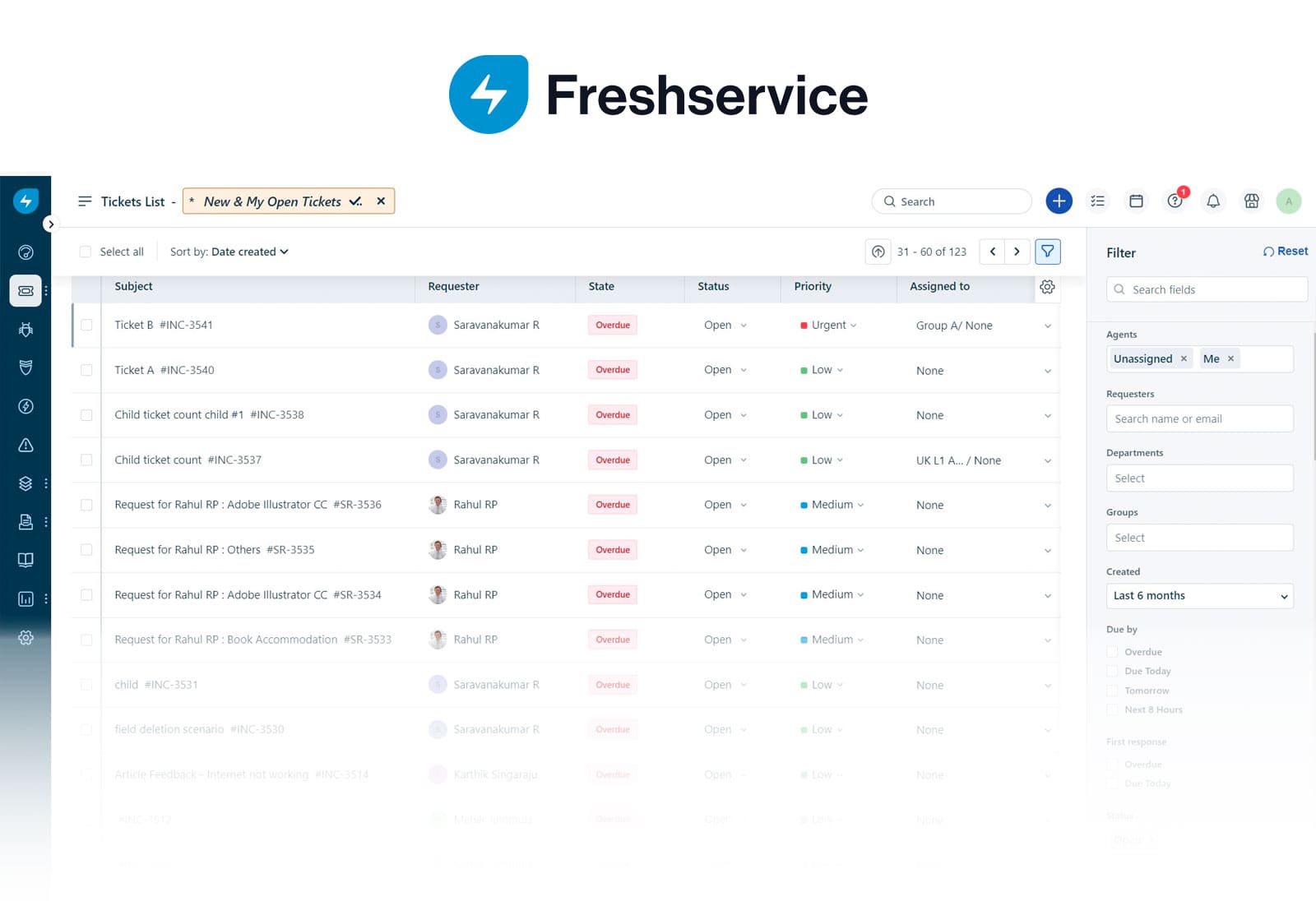 Freshservice is a cloud-based IT Service Management platform developed by Freshworks.
Freshservice is a cloud-based IT Service Management platform developed by Freshworks.
It offers a comprehensive suite of tools designed to streamline IT operations, enhance service delivery, and improve asset visibility. With its intuitive interface and robust automation capabilities, Freshservice is ideal for organizations seeking to modernize their IT infrastructure and Service Management processes.
Freshservice key features
- Automated asset discovery – Tracks hardware, software, and cloud assets using agent-based and agentless methods.
- Integrated CMDB – Maps relationships between assets and services for better impact and change management.
- SaaS Management – Monitors SaaS usage and ensures license compliance.
- Asset Lifecycle Management – Manages assets from procurement to retirement with warranty and depreciation tracking.
- Contract and purchase tracking – Keeps contracts and renewals organized with proactive alerts.
- AI-powered workflows – Uses Freddy AI to automate tasks and provide smart recommendations.
Freshservice pros
- Modern, intuitive UI – Easy for new users to navigate and adopt.
- Strong automation – Automates routine tasks and ticket routing.
- Flexible and scalable – Suits small IT teams and large enterprises alike.
- Integrated ITSM and ITAM – Centralizes service and Asset Management.
Freshservice cons
- Advanced features gated by higher plans – Project Management and analytics require upgrading.
- Limited customization in basic tiers – Some flexibility is only available in premium plans.
- Reporting could improve – Users mention a need for more advanced report options.
Freshservice pricing
Freshservice offers four pricing plans to accommodate various organizational needs:
- Starter – $19 per agent/month (billed annually): Includes basic ITSM features suitable for small teams.
- Growth – $49 per agent/month (billed annually): Adds features like Asset Management and service catalog.
- Pro – $99 per agent/month (billed annually): Includes advanced features such as change management and project management.
- Enterprise – Custom pricing: Offers full-featured ITSM solutions with advanced analytics and AI capabilities.
A 14-day free trial is available for organizations to evaluate the platform's capabilities.
Freshservice reviews and ratings
- Gartner Peer Insights: 4.3/5
- G2: 4.6/5
- Capterra: 4.5/5
"We use Freshservice in a small team and it works great for us. It is very easy to use. It provides all ITSM requirements. Overall it meets our requirements in IT, security, and accounting team."
Romil T., IT Helpdesk, Education Management
Capterra reviews
#5: Ivanti Neurons for ITAM
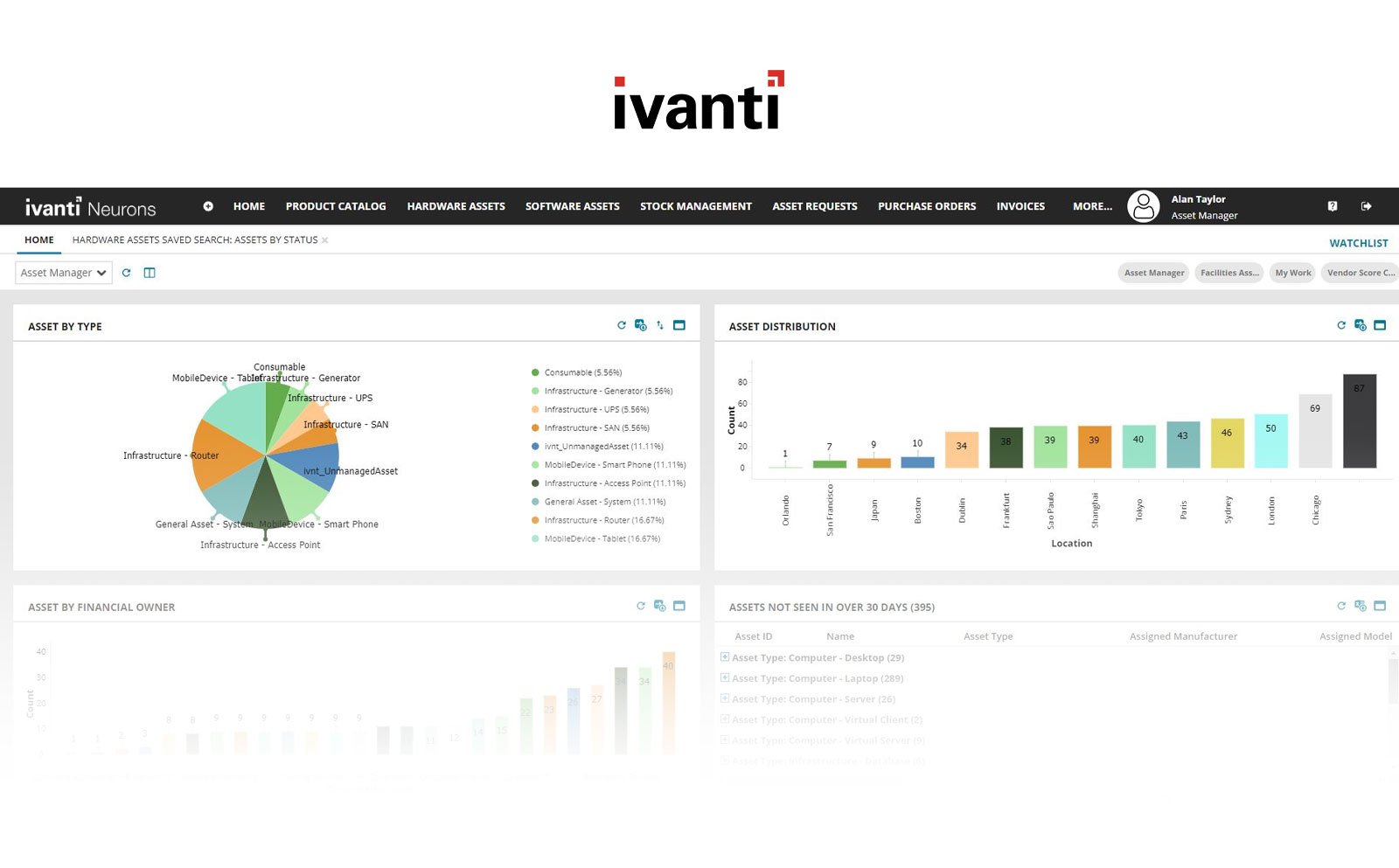 Ivanti Neurons for ITAM is a strategic IT Asset Management solution developed by Ivanti.
Ivanti Neurons for ITAM is a strategic IT Asset Management solution developed by Ivanti.
It offers comprehensive visibility and control over IT assets throughout their lifecycle, from procurement to disposal. With its flexible deployment options (cloud and on-premises) and integration capabilities, it's designed for organizations aiming to optimize asset utilization and reduce operational risks.
Ivanti Neurons for ITAM key features
- Asset Lifecycle Management – Tracks assets from acquisition to retirement, including procurement, deployment, maintenance, and disposal.
- Comprehensive asset repository – Maintains detailed records of hardware and software assets, including status, location, and warranty information.
- Product catalog and Vendor Management – Manages asset procurement processes and vendor relationships, enhancing procurement efficiency.
- Barcode scanning and mobile access – Enables quick asset identification and updates via mobile devices, facilitating remote Asset Management.
- Integration with ITSM and CMDB – Seamlessly integrates with Ivanti's IT Service Management solutions, providing a unified platform for IT operations.
Ivanti Neurons for ITAM pros
- Comprehensive asset tracking – Provides detailed visibility into IT assets, aiding in efficient management and decision-making.
- Flexible deployment options – Offers both cloud-based and on-premises solutions to suit various organizational needs.
- Integration capabilities – Integrates well with other Ivanti products, creating a cohesive IT management ecosystem.
- Mobile accessibility – Allows for Asset Management on-the-go through its mobile application.
Ivanti Neurons for ITAM cons
- Complex configuration – Initial setup and customization can be intricate, potentially requiring dedicated administrative resources.
- Limited out-of-the-box features – May necessitate additional customization to fully meet specific organizational requirements.
- User interface – Some users find the interface less intuitive compared to other modern ITAM solutions.
Ivanti Neurons for ITAM pricing
Ivanti does not publicly disclose specific pricing for Neurons for ITAM. Pricing is typically customized based on the organization's size, deployment preferences, and specific requirements. Interested parties are encouraged to contact Ivanti directly for a tailored quote.
#6: Snipe-IT
 Snipe-IT is an open-source IT Asset Management solution developed by Grokability.
Snipe-IT is an open-source IT Asset Management solution developed by Grokability.
Designed for organizations seeking a customizable and cost-effective tool, it offers comprehensive asset tracking capabilities. With its self-hosted nature, Snipe-IT provides flexibility for businesses to tailor the system to their specific needs.
Snipe-IT key features
- Asset tracking – Manage hardware assets with barcode and QR code scanning, including assignment to users and locations.
- License Management – Monitor software licenses, track expirations, and ensure compliance.
- Custom fields and reporting – Add custom attributes to assets and generate detailed reports for audits and planning.
- REST API – Integrate with other systems and automate processes using the robust API.
- Email alerts – Receive notifications for expiring warranties, licenses, and upcoming check-ins.
Snipe-IT pros
- Cost-effective – Free to use with no limits on users or assets when self-hosted.
- Highly customizable – Open-source nature allows for extensive customization and integration.
- Community support – Active user community provides assistance and shared resources.
Snipe-IT cons
- Requires technical expertise – Initial setup and maintenance demand a certain level of technical skill.
- Limited advanced features – Lacks functionalities like GPS tracking and advanced alerting systems.
- No dedicated mobile app – Mobile access is available via browser, but there's no native mobile application.
Snipe-IT pricing
Snipe-IT offers a free self-hosted version with no restrictions on users or assets. For those preferring a hosted solution, paid plans are available:
- Basic Hosting – $39.99/month
- Small Business Hosting – $99.99/month
- Dedicated Hosting – $249.99/month
Additional support packages can be purchased separately, ranging from $449 to $4,999 per year, depending on the level of support required.
Snipe-IT reviews and ratings
- G2: 4.6/5
- Capterra: 4.4/5
“All in all, if you're looking for a very competitive price for great Asset Management, you should definitely go for it.”
Capterra review
#7: Spiceworks Inventory
 Spiceworks Inventory is a free, cloud-based IT Asset Management solution developed by Spiceworks.
Spiceworks Inventory is a free, cloud-based IT Asset Management solution developed by Spiceworks.
Designed for small to medium-sized businesses, it offers essential asset tracking and help desk functionalities without any cost. Its user-friendly interface and integration capabilities make it a practical choice for organizations seeking basic IT Asset Management tools.
Spiceworks Inventory key features
- Automated device discovery – Scans the network to identify and catalog connected devices, providing real-time hardware and software details.
- Customizable reporting – Generates detailed reports on device inventory, usage, and compliance, aiding in audits and budgeting.
- Help desk integration – Seamlessly integrates with Spiceworks Help Desk, enabling efficient ticket management and issue resolution.
- Mobile accessibility – Offers mobile apps for Android and iOS, allowing IT teams to manage assets on the go.
- Vendor and Contract Management – Tracks vendor information and contract deadlines, ensuring timely renewals and compliance.
Spiceworks Inventory pros
- Completely free – Offers full functionality without any cost, making it accessible for organizations with limited budgets.
- Easy setup – Quick to deploy with minimal configuration required, facilitating rapid implementation.
- Community support – Backed by an active community of IT professionals, providing shared knowledge and assistance.
Spiceworks Inventory cons
- Limited advanced features – Lacks functionalities like GPS tracking and advanced alerting systems, which may be essential for larger enterprises.
- Performance issues – Some users report that scanning can be resource-intensive, potentially affecting network performance.
- Interface usability – The user interface could be more intuitive, with some users finding navigation challenging.
Spiceworks Inventory pricing
Spiceworks Inventory is entirely free, offering unlimited access to all features without any user or asset limitations. The platform operates on an ad-supported model, allowing organizations to utilize its tools without incurring costs.
Spiceworks Inventory reviews and ratings
- G2: 4.0/5
- Capterra: 4.3/5
#8: JumpCloud
 JumpCloud is a cloud-native platform that unifies identity, device, and access management, catering to modern IT environments.
JumpCloud is a cloud-native platform that unifies identity, device, and access management, catering to modern IT environments.
It enables organizations to manage user identities, secure access, and oversee devices across various operating systems, including Windows, macOS, and Linux. Designed for remote and hybrid workforces, JumpCloud simplifies IT operations by consolidating multiple management tools into a single platform.
JumpCloud key features
- Unified Identity and Access Management – Centralizes user authentication with Single Sign-On (SSO) and Multi-Factor Authentication (MFA), enhancing security across applications and networks.
- Cross-platform Device Management – Provides remote management capabilities for devices running Windows, macOS, and Linux, including policy enforcement and patch management.
- Directory services – Offers cloud-based directory services that integrate with various protocols like LDAP, RADIUS, and SAML, facilitating seamless user and Device Management.
- Comprehensive integrations – Supports integrations with numerous applications and services, including Microsoft 365, Google Workspace, AWS, and Salesforce, streamlining IT workflows.
- Zero Trust security model – Implements a Zero Trust approach by continuously verifying users and devices before granting access, thereby reducing potential security risks.
JumpCloud pros
- All-in-one platform – Combines identity, access, and Device Management, reducing the need for multiple disparate tools.
- User-friendly interface – Features an intuitive UI that simplifies administration and reduces the learning curve for IT teams.
- Flexible deployment – Being cloud-based, it supports remote work environments and scales with organizational growth.
JumpCloud cons
- Pricing scalability – Costs can increase significantly as the number of users grows or as additional features are required.
- Limited advanced features – Some users report that advanced functionalities, such as detailed reporting and analytics, could be more robust.
- Integration limitations – While it integrates with many services, certain integrations may lack depth or require additional configuration.
JumpCloud pricing
JumpCloud offers a tiered pricing model based on the features and services required:
- Device Management – $11/user/month
- SSO – $13/user/month
- Core Directory – $15/user/month
- Platform – $22/user/month
- Platform Plus – $27/user/month
A free trial is available, and the first 10 users are free, making it accessible for small teams to evaluate the platform.
JumpCloud reviews and ratings
- Gartner Peer Insights: 4.5/5.
- G2: 4.5/5
- Capterra: 4.7/5
“I have been very happy with JumpCloud. I used to run an ActiveDirectory system for the small amount of users I have, and AD is so old, clunky, and often overkill. This is a lightweight solution that can allow you to manage your organization with ease using users, groups, and policies. Setting up a user in another state is just a click away on the panel.”
Chris C.
Capterra reviews
#9: Device42
.jpg?width=1280&height=644&name=Device42-interface-2%20(1).jpg) Device42 is a comprehensive IT Asset Management solution designed to provide organizations with deep visibility into their IT infrastructure.
Device42 is a comprehensive IT Asset Management solution designed to provide organizations with deep visibility into their IT infrastructure.
It excels in hybrid environments, offering robust discovery and dependency mapping capabilities. Device42 is particularly suited for enterprises seeking detailed insights into their IT assets and configurations.
Device42 key features
- Automated asset discovery – Continuously identifies and catalogs IT assets across on-premises and cloud environments without the need for agents.
- Dependency mapping – Visualizes relationships between applications, servers, and network components, aiding in impact analysis and change management.
- CMDB – Maintains a centralized repository of configuration items, enriched with metadata for effective IT Service Management.
- IP Address and Password Management – Tracks IP allocations and securely stores credentials, enhancing network organization and security.
- Integration capabilities – Offers RESTful APIs and webhooks for seamless integration with existing IT systems and tools.
Device42 pros
- Comprehensive discovery tools – Effectively manages a vast number of devices and configurations across diverse environments.
- User-friendly interface – Simplifies navigation and daily operations for IT teams.
- Responsive customer support – Praised for quick issue resolution and continuous feature enhancements.
Device42 cons
- Pricing transparency – Lacks publicly available pricing details, requiring direct contact for quotes.
- Complex task workflows – Some operations may involve multiple steps, potentially slowing down processes.
- Auto-discovery limitations – May not detect every device automatically, necessitating manual input for complete asset visibility.
Device42 pricing
Device42 operates on a tiered annual subscription model based on the number of devices managed.
For example, managing up to 1,000 devices is priced at $4,999 per year. Larger deployments, especially those overseeing over 10,000 servers across multiple cloud environments, may see costs exceeding $100,000 annually, depending on specific requirements and selected features.
Device42 reviews and ratings
- G2: 4.7/5
- Capterra: 4.8/5
“From stale spreadsheet, to scripted google sheets to Device42 was a journey that we took and now we're happy that these days are over. Device42 provide a great deal of visibility and help us in many process throughout the org.”
Garaldo M., SAM Analyst
Capterra review
Must-have features in hardware inventory software
When evaluating hardware inventory software, it’s important to focus on features designed for managing IT hardware assets — like laptops, servers, network devices, and peripherals. These platforms go beyond general inventory tracking by offering tools to support the full lifecycle of your tech assets, from onboarding to disposal.
Here are the essential features to look for:
- Centralized asset database: Keep all asset information — including specs, purchase details, locations, and ownership — in one place to ensure consistency and easy access.
- Automated asset tracking: Track changes in asset status, movement, or assignment automatically to reduce manual work and improve accuracy.
- Barcode and QR code scanning: Use scannable tags to speed up check-in/check-out, update statuses on the go, and reduce data entry errors.
- Reporting and analytics: Generate reports on usage, costs, depreciation, and more to support audits, budgeting, and IT planning.
- Asset categorization and smart tagging: Group assets by department, type, or status — and use smart tags to flag unauthorized moves or conditions automatically.
- User-friendly interface: A clean, intuitive UI helps users navigate the tool with minimal training, improving adoption and efficiency.
- Integrations with IT systems: Connect with ITSM tools, procurement platforms, or identity systems to ensure consistent data and streamline processes.
- Built-in security controls: Detect outdated or unauthorized software, monitor compliance, and protect sensitive device data from risks.
- Alerts and notifications: Get notified of upcoming maintenance, low stock, expiring warranties, or unusual changes in real time.
- Responsive customer support: Access documentation, training, and technical support to resolve issues quickly and make the most of your platform.
Final thoughts
Managing IT hardware is no longer just about knowing where your laptops are — it’s about gaining full visibility, staying compliant, optimizing costs, and enabling smarter decisions across the entire IT lifecycle.
Whether you choose an open-source tool like Snipe-IT, an enterprise-grade platform like Ivanti Neurons, or an all-in-one solution like InvGate Asset Management, the right software will help you stay ahead of growing complexity. Evaluate your needs, compare features, and don’t underestimate the power of a well-organized IT inventory — it’s the foundation for a more secure, efficient, and future-ready organization.
